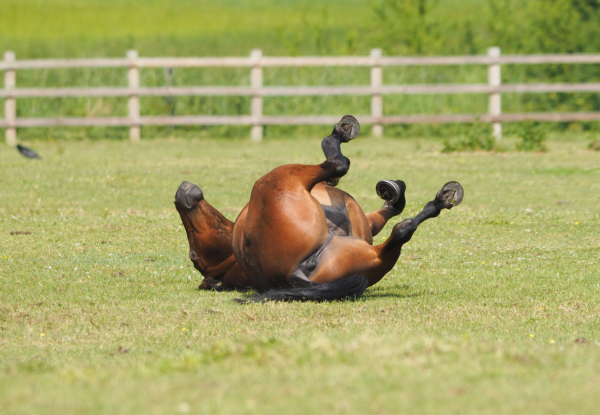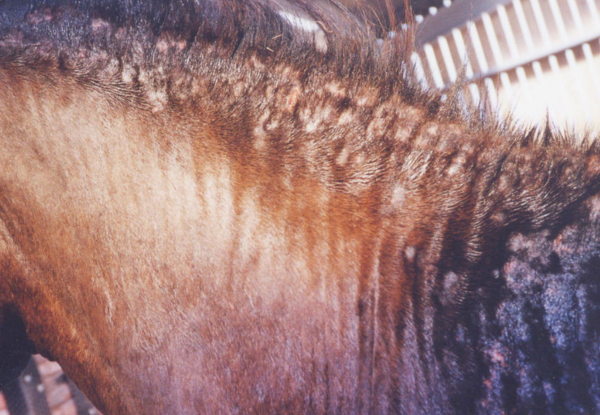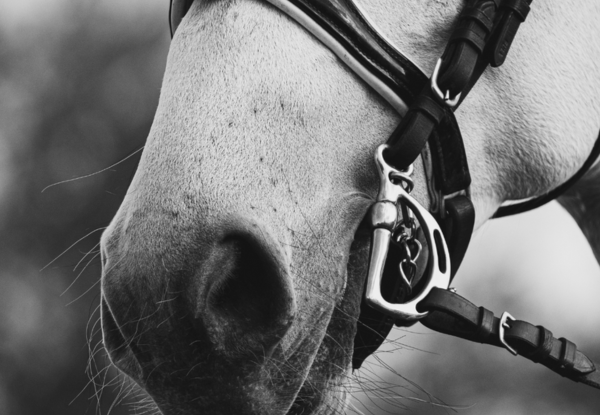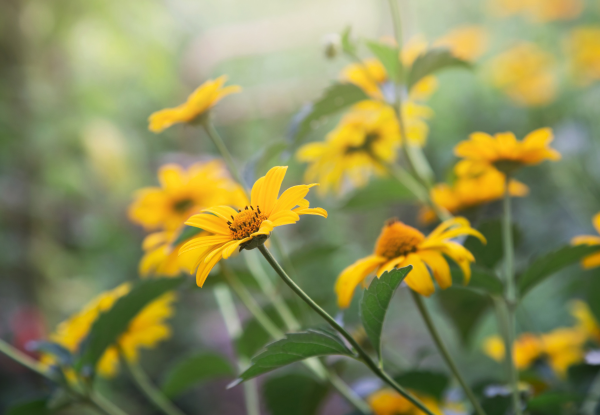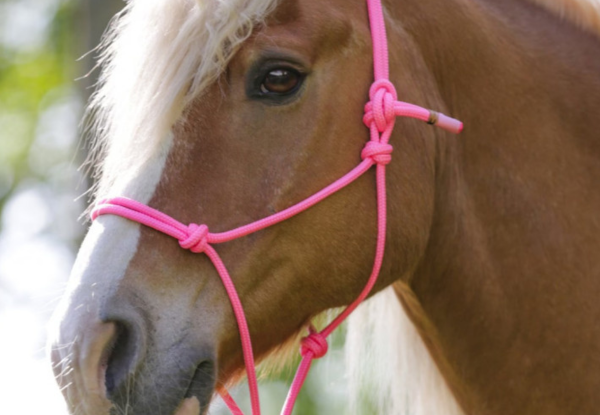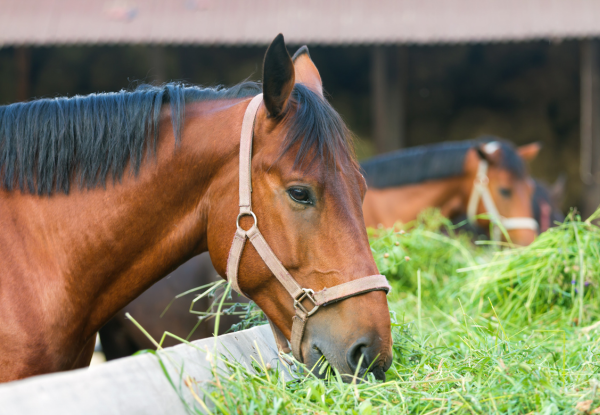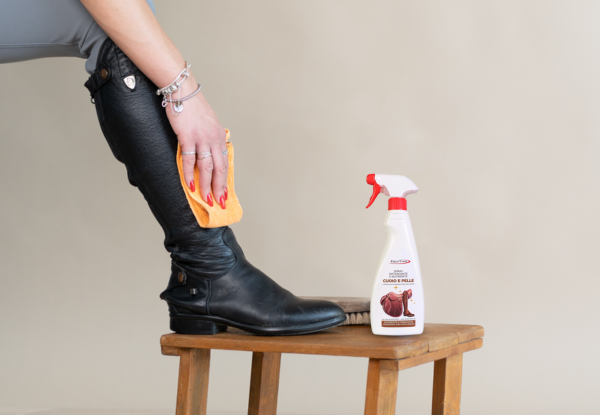Do you really know how horses sleep? It's not just a fun fact: knowing it helps improve their well-being. A...
Sweet itch in horses: Symptoms, causes and treatments for a healthy coat
Sweet itch is one of the most troublesome skin diseases for horses during the warm months.
It is characterized by intense itching and skin lesions. It affects the horse’s skin repeatedly and can seriously harm its well-being.
In this article, you will find everything you need to know: the symptoms of sweet itch, the most common cause, and the best ways to prevent and treat it effectively.
A must-read guide for every horse owner.
WHAT IS SWEET ITCH IN HORSES?
Sweet itch is a skin disease of allergic origin, mainly caused by the bites of small insects of the Culicoides genus.
It appears especially during the hotter months, when these insects multiply and, by biting the horse, trigger an immune system reaction.
This condition can affect all horse breeds, but some horses are more prone to it.
WHAT ARE THE MAIN SYMPTOMS OF SWEET ITCH?
The symptoms of sweet itch vary from horse to horse, but the most common signs are:
-
Intense itching, causing the horse to scratch or rub against hard surfaces.
-
Skin lesions, scabs, and hair loss.
-
Swelling, redness, and darkening of the affected areas.
-
Presence of scabs and skin flakes.
The most affected areas are often the croup, the base of the tail, the mane, and sometimes the belly.
WHAT CAUSES SWEET ITCH IN HORSES?
The main cause of itching and dermatitis is an allergic reaction to the bites of Culicoides insects.
When a horse is allergic to these bites, its body overreacts, causing inflammation and eczema.
Other factors that can worsen the situation include:
-
Presence of parasitic infestations.
-
Hot and humid environments with little ventilation.
-
Weak immune system.
-
Presence of bacteria or fungi that can cause secondary infections.
HOW TO IDENTIFY SWEET ITCH IN THE EARLY STAGES?
Recognizing sweet itch early is very important to avoid complications. Watch if your horse shows:
-
Localized itching on the mane and tail.
-
Frequent rubbing against stable walls.
-
Mild irritation and swelling in specific areas of the coat.
If you notice these signs early, you can act before the problem becomes serious.
WHERE DO SKIN LESIONS APPEAR MOST OFTEN?
Skin lesions appear most often in areas like:
-
The croup and the base of the tail.
-
The mane area.
-
The belly and skin folds.
Continuous exposure to insects, biting or rubbing against objects, can damage the skin even more and make the disease worse.
WHAT ROLE DO CULICOIDES INFESTATIONS PLAY?
The Culicoides midge is the main cause of sweet itch. Its bite releases saliva with allergens that trigger a strong allergic reaction in the horse.
Culicoides are attracted by:
-
Warm and humid places.
-
Areas near standing water.
Keeping horses away from these places helps to reduce the risk of dermatitis.
HOW DOES ITCHING MAKE THE SITUATION WORSE?
Itching is one of the most intense and difficult symptoms of sweet itch in horses.
It causes the horse to scratch, rub, and bite the affected areas again and again, creating a vicious circle: the more the horse scratches, the more the skin gets irritated and damaged, and the itching gets even worse.
This behavior causes skin wounds. These wounds break the natural skin barrier and allow bacteria or fungi to enter.
The wounds can easily become infected, leading to bacterial and sometimes fungal infections. This makes the disease worse and the healing slower and more difficult.
WHICH LOTIONS OR SHAMPOOS ARE EFFECTIVE IN TREATMENT?
A good management needs a combined approach: prevention, physical protection, and specific treatments.
Preventive food supplements
A very important step to manage sweet itch is using food supplements.
Starting in spring, before insects become active, it is good to enrich the horse's diet with products that strengthen the skin and support the immune system.
Some supplements, like NODER from the UNIKA line, help the horse react better to insect bites. They contain omega-3 fatty acids, plant extracts, and seaweed.
These ingredients help to keep the skin healthy and make the horse’s sweat less attractive to insects.
Giving these supplements before the insect season starts can make a big difference, especially for horses that had problems in the past.
Daily protection with repellents
To protect the horse from insect bites, it is important to use both chemical and natural repellents.
Products with permethrin work very well, but for a gentler solution, repellents with neem oil are recommended. Neem oil is known for its repellent and soothing properties.
Use repellents every day, especially during the most critical hours, to lower the risk of bites.
Physical protection of the body
Another important help is physical protection. Using breathable fly sheets and fly masks for the sensitive areas like eyes and ears can prevent bites effectively.
For horses that are very sensitive, these protections are essential to prevent worsening of the symptoms.
Environmental management
It is also useful to work on the horse’s environment. If the horse lives outside and tends to rub against trees or fences, it is good to limit contact areas with plastic barriers to avoid more skin injuries.
Also, using fans in stables helps to keep insects away.
Wound care
If there are wounds or scabs, it is important to apply specific products to help healing and protect the skin.
A soothing and protective ointment, like Protection Plus Cream, gives immediate relief and reduces the risk of bacterial infections.
In case of large wounds, you can also use disinfectant shampoos or sprays like Gallop Medicated Shampoo.
WHEN IS MEDICAL HELP NEEDED FOR A SKIN INFECTION?
A veterinarian must be consulted if you notice:
-
Visible bacterial infection (pus, bad smell, scabs, or open wounds).
-
Severe inflammation of the skin, pain, or general apathy of the horse.
-
No improvement after using shampoo or lotions.
In some cases, the veterinarian may prescribe antibiotics or corticosteroids to calm the allergic reaction and stop the spread of eczema.
KEY POINTS TO REMEMBER
-
Summer dermatitis is caused by an allergic reaction to the bites of Culicoides insects.
-
The main symptoms are itching, lesions, swelling, and eczema.
-
It mainly affects the mane, the base of the tail, and the croup.
-
It is important to act quickly with shampoos, lotions, and preventive measures.
-
Recurrent sweet itch needs an annual management plan.
-
Contact a veterinarian if you see infections.
-
Good stable hygiene and protection from Culicoides are essential for the horse’s well-being.
👉 If you have questions or want a technical evaluation, contact us on WhatsApp +39 349 733 9837: we offer you personalized advice.
.png)
.png)
.png)

